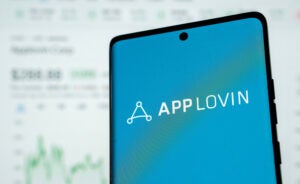 Hearst doesn’t view itself a media company, but rather as a technology company.
Hearst doesn’t view itself a media company, but rather as a technology company.
“We have been making a concerted effort to transform from a media company that used great technology to a technology company,” said Allen Duan, Hearst’s head of corporate technology.
Hearst’s technology team builds tech for a world where content is distributed on platforms. But as publications build out teams just for Facebook Live or Snapchat, they risk missing out on the efficiencies of scale.
To solve for that dilemma, Hearst is coming up with proprietary tech products like Buzzing, which helps editors identify trending stories and extend their reach by cross-posting to third-party sites or social media platforms. Advertisers can purchase Buzzing as a programmatic package.
Buzzing is as an extension of Heart’s Media OS. The home-built tech resembles a content management system, but it’s designed to enable editors to cross-post across Hearst’s family or sites and its social platforms, track performance or even come up with related story ideas.
Duan talked to AdExchanger about these two key Hearst initiatives, and how Hearst is approaching its first-party data, header bidding and mobile.
AdExchanger: When uniting data across platforms, how do you deal with differences in measurement and the amount of data each platform shares?
ALLEN DUAN: We have a data services team and a process for getting that data back from partners. When we normalize that data, we can see the types of content that works better on one distribution platform versus the other and feed that back to our editors, for monetization and for marketing.
How is Hearst thinking about mobile?
We’ve removed the differentiation between the mobile and desktop experience. Fifty percent to 70% [of Hearst’s audience] are on mobile, so we pay attention to performance metrics like load time. Particularly on mobile, people are engaging with our content off property. We’ve invested heavily in aligning with partners to build out the mobile experience. We’ve made investments in AMP, Instant Articles, Snapchat Discover, as well as a joint venture with Snapchat with Sweet, which is a new [content] brand.
What other platforms are on the horizon for Hearst?
AdExchanger Daily
Get our editors’ roundup delivered to your inbox every weekday.
Daily Roundup
The emerging media opportunities range from live video to virtual reality to early explorations with augmented reality. We are also looking at how people are engaging with content on audio mechanisms. We have a skill we launched with Alexa on the Amazon Echo over the holidays that has horoscopes from Elle magazine.
What kind of data has Amazon shared with you about how the skill is doing?
We’ve had some preliminary, high-level data, but we are looking for more data to be able to improve the skill itself. As audio expands outside of the Echo and into car experiences and elsewhere, we want to make sure we are programming and creating the best content that serves the use case.
Publishers are often considered less sophisticated than advertisers and ad tech intermediaries. What do you make of that imbalance? Can it be corrected?
Tech for advertisers vs. publishers is comparing apples to oranges. On Hearst’s end, there has been quite a bit of work that’s been enabled for advertisers to use, like knowing how to take first-party data and be able to target and build out solutions and scale the campaigns effectively.
Does header bidding correct that imbalance?
The driver of header bidding is maximizing value for the advertiser and revenue performance for us. We are in very early days in terms of the software and solutions that can manage that. Header bidding as a solution has challenges with performance and how to optimize with demand that has various levels of sophistication.
How will header bidding evolve?
In the coming months and years header bidding will evolve quite a bit as the partners increase in sophistication. There are also going to be alternatives that come into play. To the degree that more of this can be done server-side and pre-call, we are very interested in solutions of that nature. We are especially interested in that because of the end-user experience. Getting page load times as good as possible is a significant priority for us. That’s forced us to be disciplined in how we use header bidding in our pages.
What is Heart’s philosophy for building tech itself versus partnering for tech?
Where there are solutions in market, we want to leverage the development that third parties have built. The areas we tend to do homegrown are where we want to differentiate, or where the solutions in market don’t solve what we are looking for. Machine learning is probably a great example of that. A lot of the great solutions we are looking for are not in market yet. We have data scientists, software engineers building toward insights we can’t get through the marketplace.
What kind of insights can you get from machine learning?
We spent a lot of time looking at the type of user clickstream behavior that can yield results for an advertiser. If [the advertiser] can help us understand some offline purchase behavior, we would look for patterns in the people that ended up making that offline purchase. Maybe they tended to read articles in the morning, or articles related to fashion and recipes. We can apply those insights and data and report back to the advertiser.
What do Heart’s first-party data capabilities look like right now, and what’s in the future?
We have two levels. On one level we have custom segments and personas, where advertisers can target broad segments like fashionistas or luxury auto enthusiasts. The second level is being able to work with them on a custom basis, to do pre- and post-campaign analysis on end-user first-party data. We want to refine those personas and get to a greater level of clarity, with personas as specific to people who are interested in skincare products, or specific makes and models of a car they may be interested in.
Time Inc. made a big bet on deterministic data with its acquisition of Viant. Is Hearst trying to develop deterministic data or cross-device tracking capabilities?
Today, a lot of our focus has been on attributes of the audiences. We are exploring a number of identity-based solutions. We would like to offer users a similar experience across mobile and desktop devices, for example. There are a number of things we have done with pilots that use deterministic data, but we are still in early days.
This interview has been condensed and edited.













